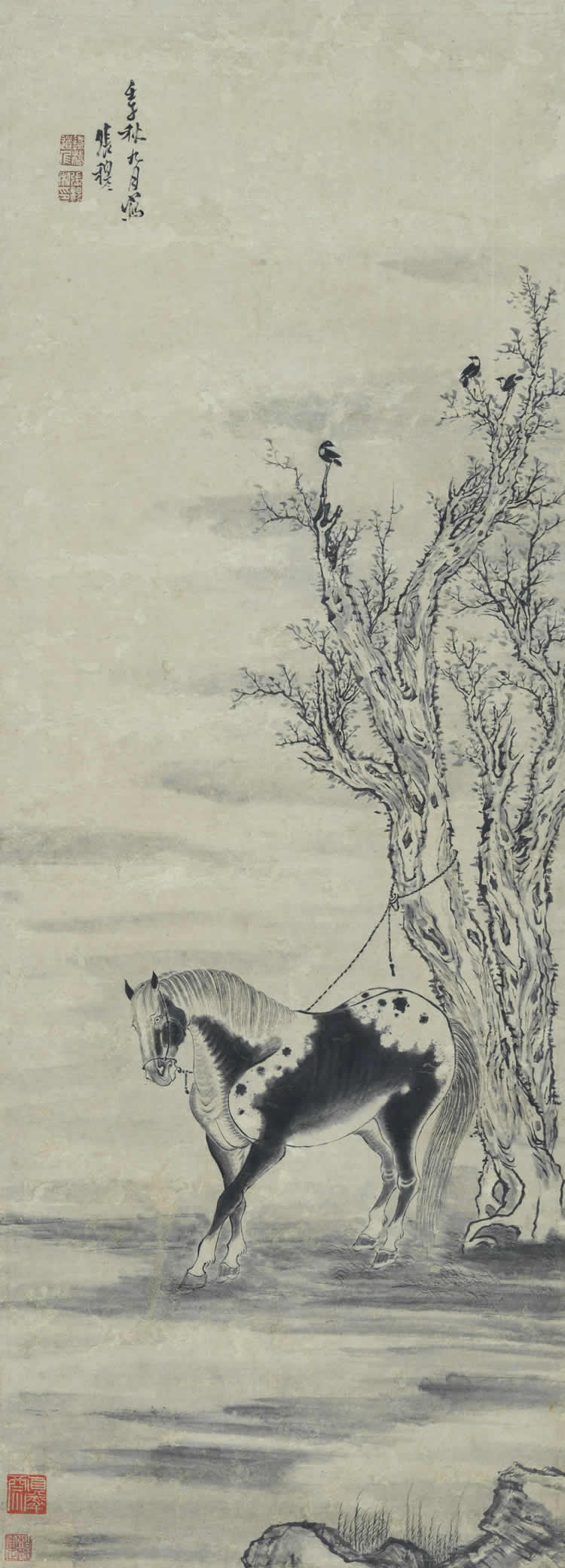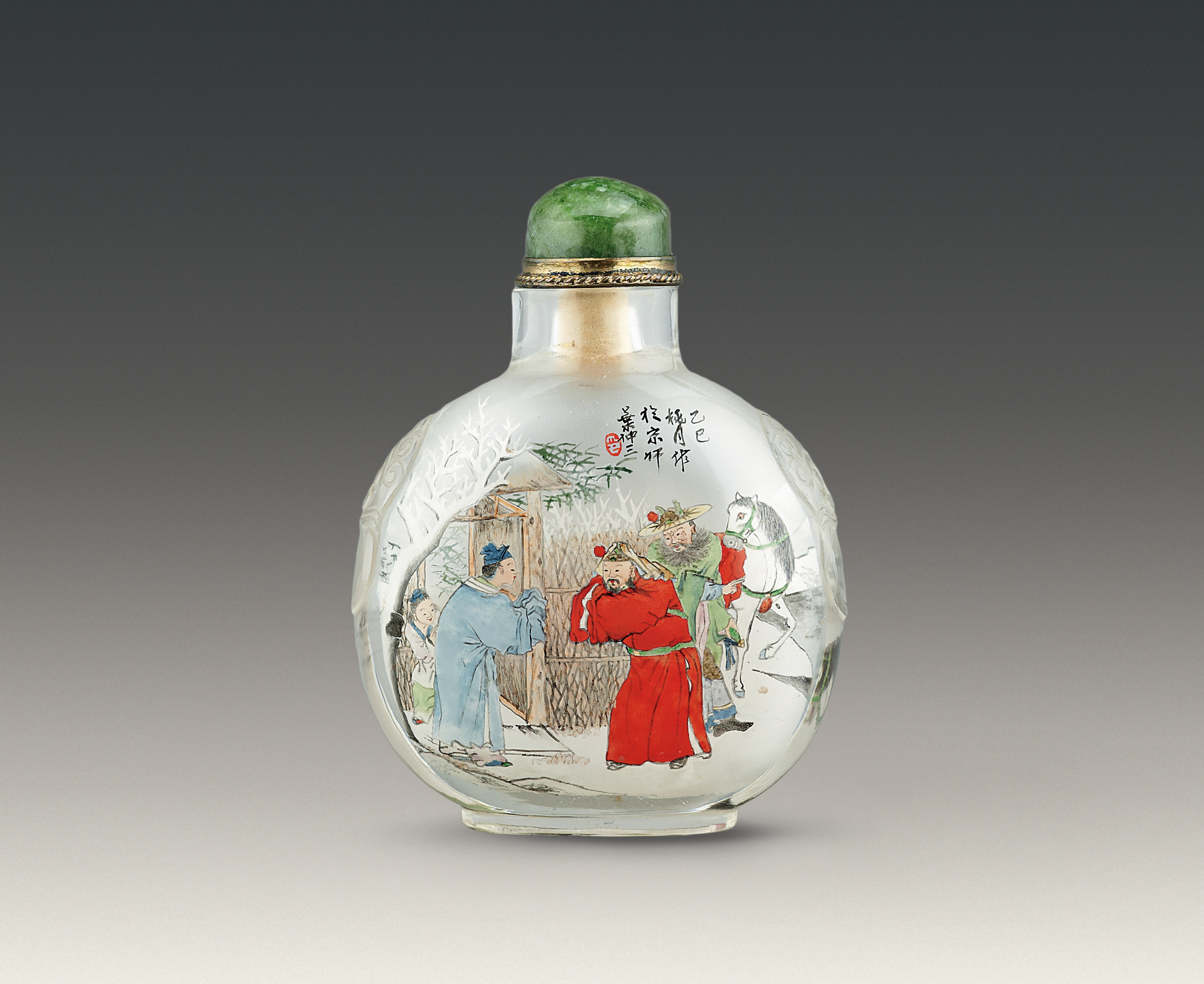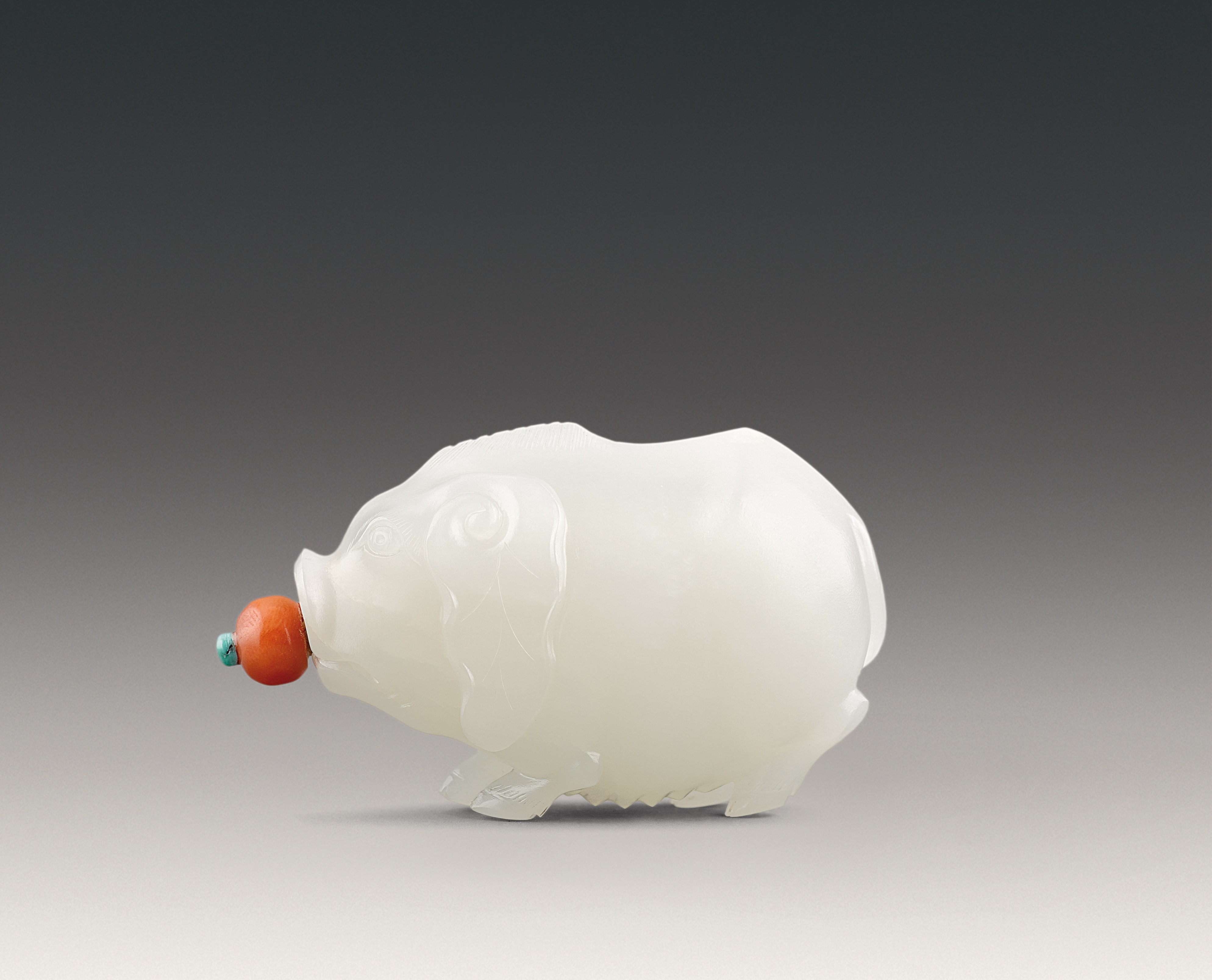 Web Content Display
Web Content Display
Fuyun Xuan Collection of Chinese Snuff Bottles
About Fuyun Xuan Collection
The Fuyun Xuan Collection is an important private collection in Hong Kong established by the late local collector, Mr Christopher Sin. Since 1989, Mr Sin had dedicated himself to collecting snuff bottles, and over the years, he built a collection of remarkable scale and comprehensiveness that come to be recognized as one of the most important private collections of snuff bottles in the world. In the spirit of Mr Sin’s generosity, his wife, Mrs Josephine Sin, has donated 490 sets of snuff bottles to the Hong Kong Museum of Art, making these cultural gems accessible to a wider public. This donation would immensely enrich the HKMoA's Chinese Antiquities collection, solidifying its status as a leading centre for the collection and study of Chinese artefacts.
In the 17th century, the introduction of snuff led to the emergence of small bottles for holding snuff in China, which gained nationwide popularity throughout the Qing dynasty and evolved from practical vessels into fashionable icons of exquisite craft. The small and delicate snuff bottle covers a wide range of craftsmanship, making it a miniature embodiment of Chinese art and craft history. This generous donation encompasses pieces in various forms, materials, styles and crafts, including jade, porcelain, glassware, lacquerware, calabash, enamelware, and inside-painted varieties, encapsulating the essence of snuff bottle artistry in its resplendent breadth and depth.
About Christopher and Josephine Sin
Mr Christopher Sin had been an active member of the International Chinese Snuff Bottle Society. Over the years, he had been relentlessly contributing articles to its periodical and organising exhibitions worldwide to showcase his collection. He had contributed immensely to the promotion of the appreciation of snuff bottles, and his deep fascination with snuff bottles earned him the nickname “Snuff Bottle Enthusiast” among fellow collectors. In the spirit of his passion and generosity, his wife, Mrs Josephine Sin, has entrusted his precious lifetime collection to the HKMoA, with the hopes of safeguarding and promoting the legacy of this unique Chinese art form.
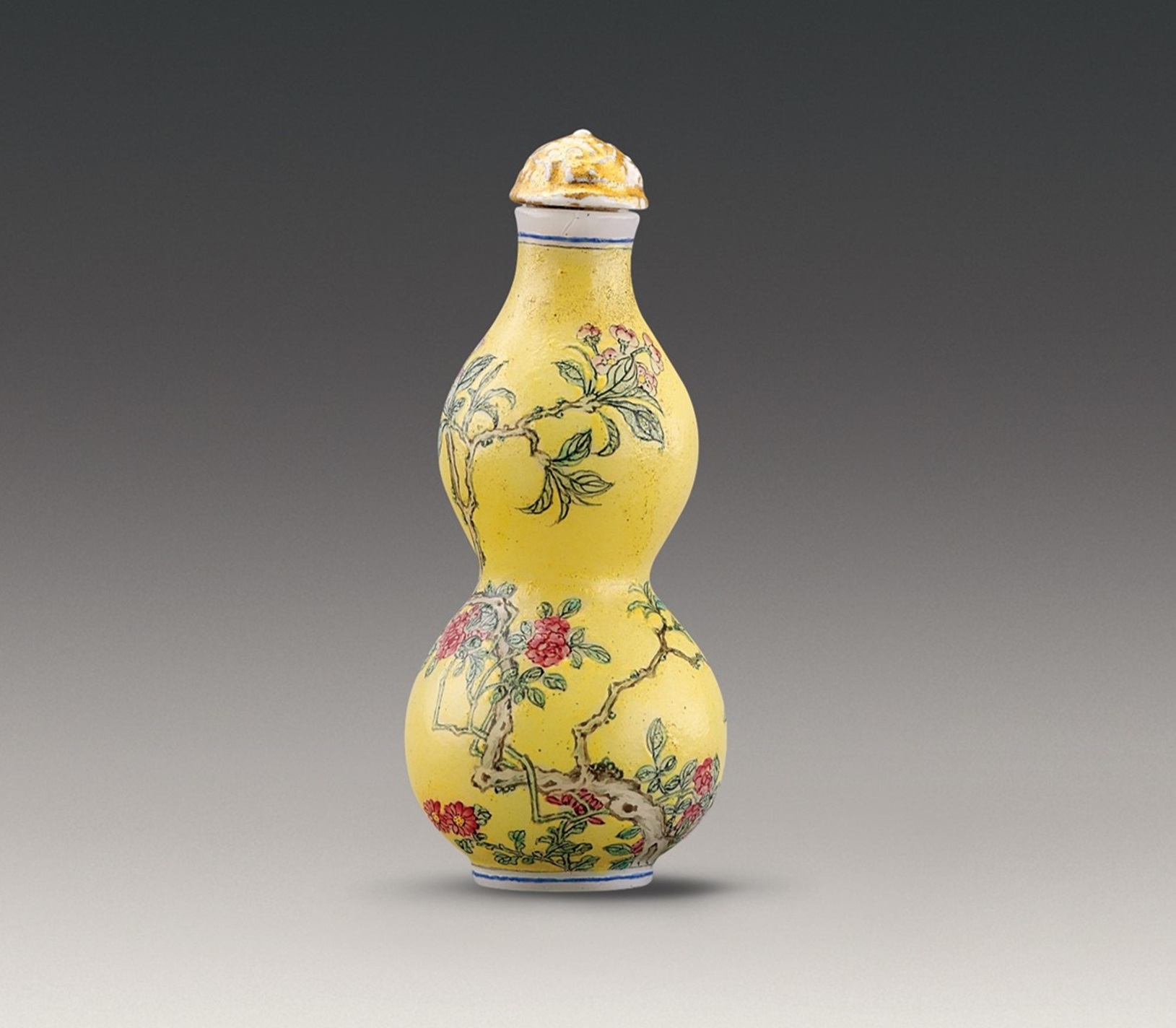

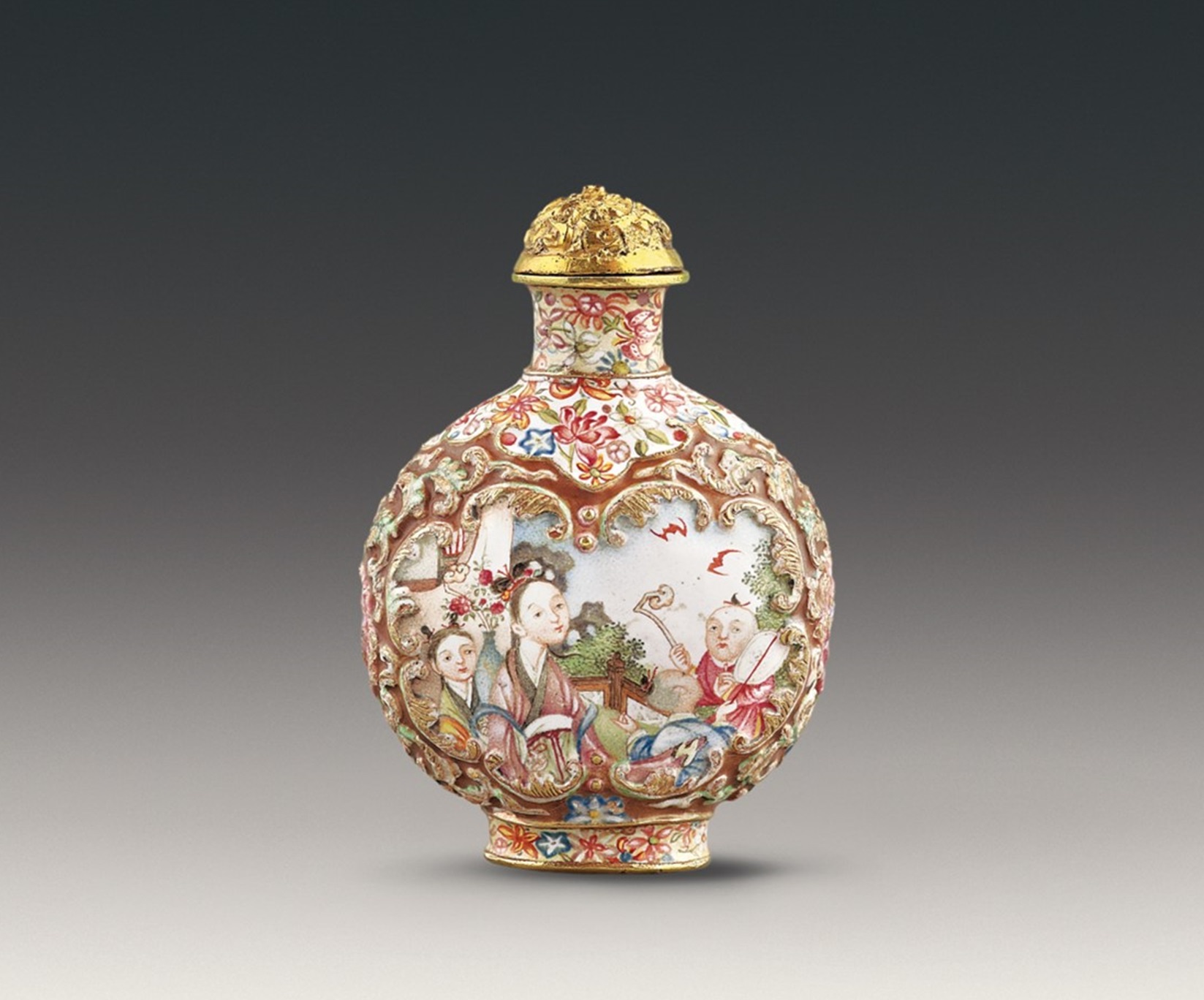
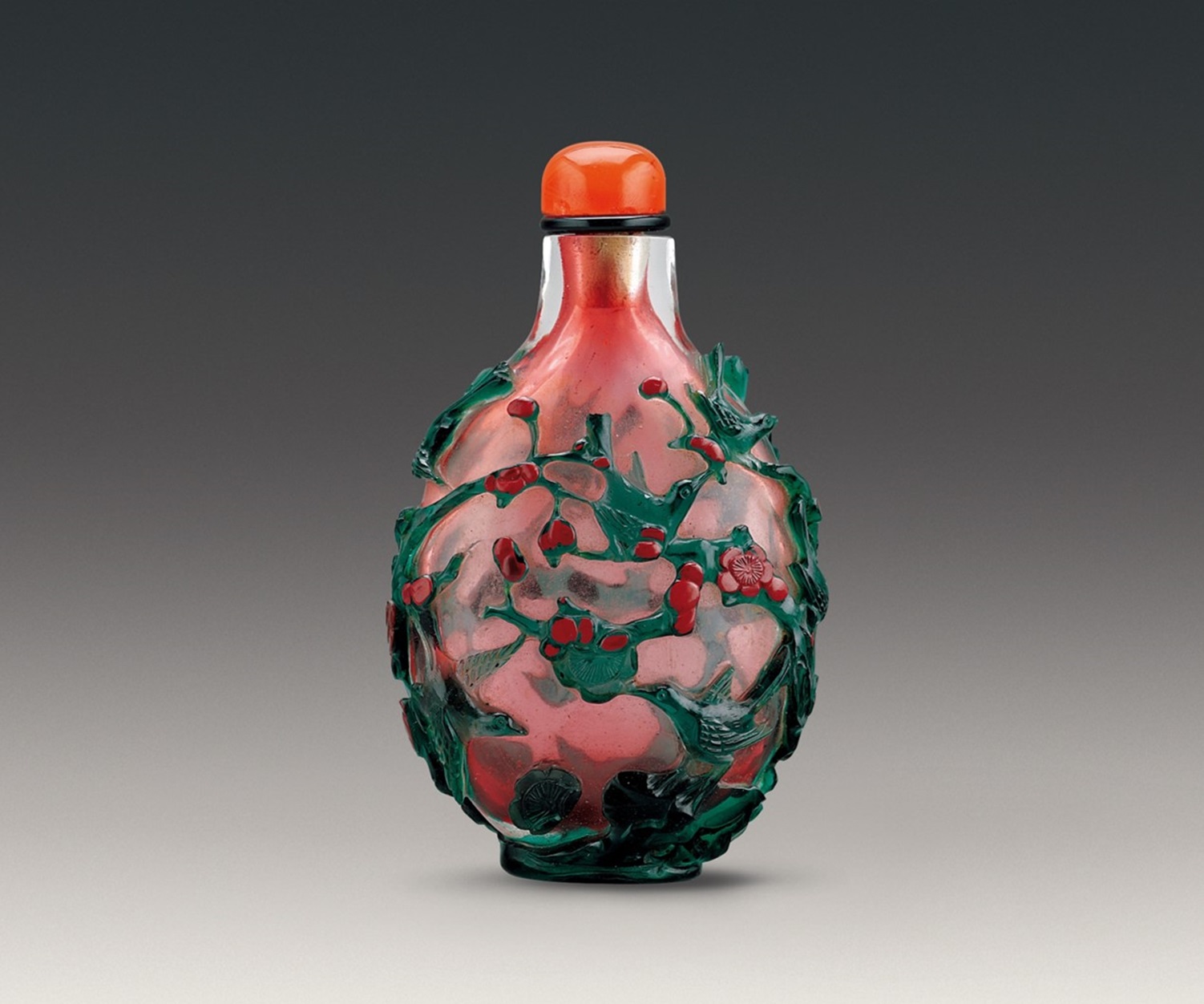
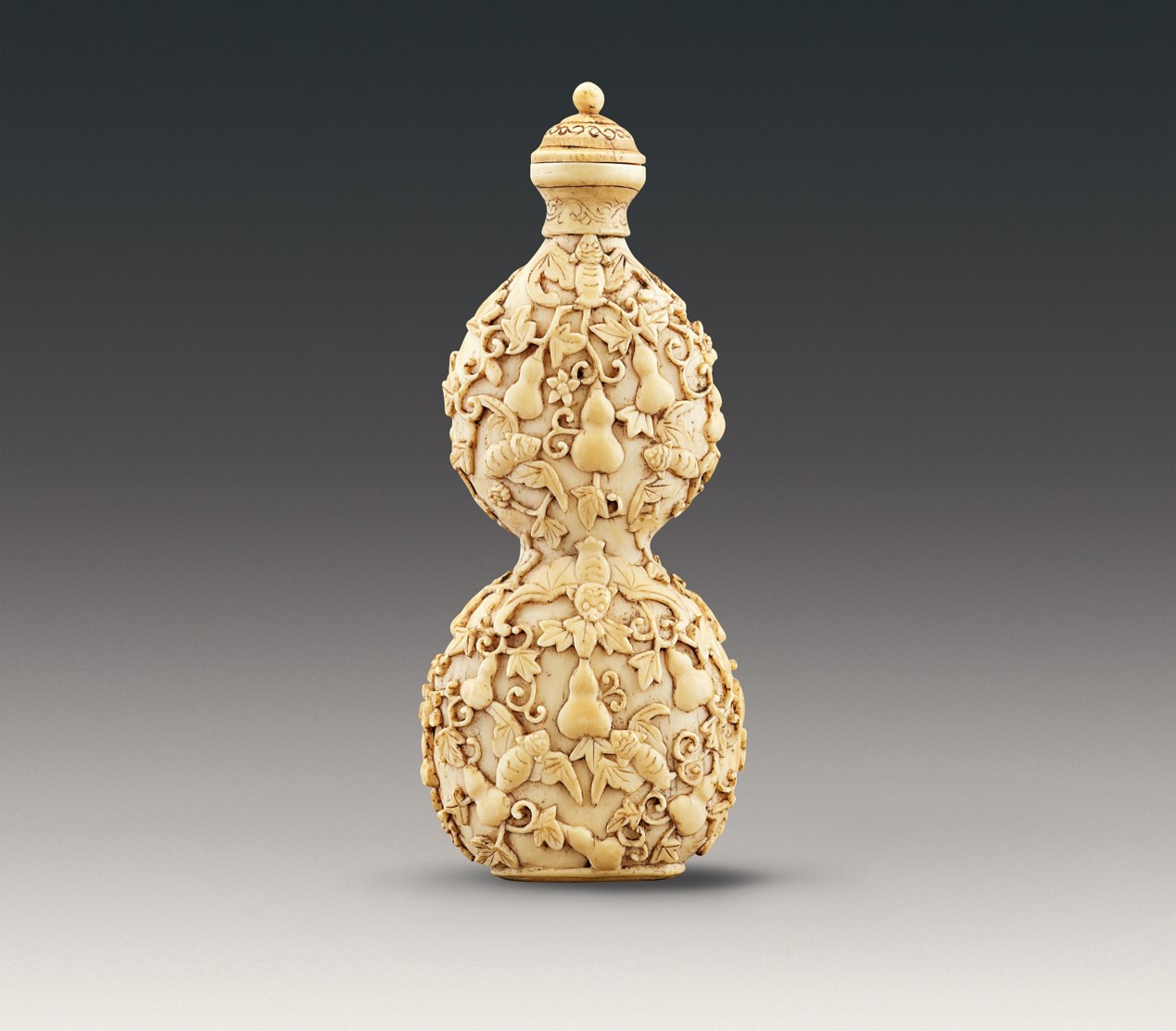
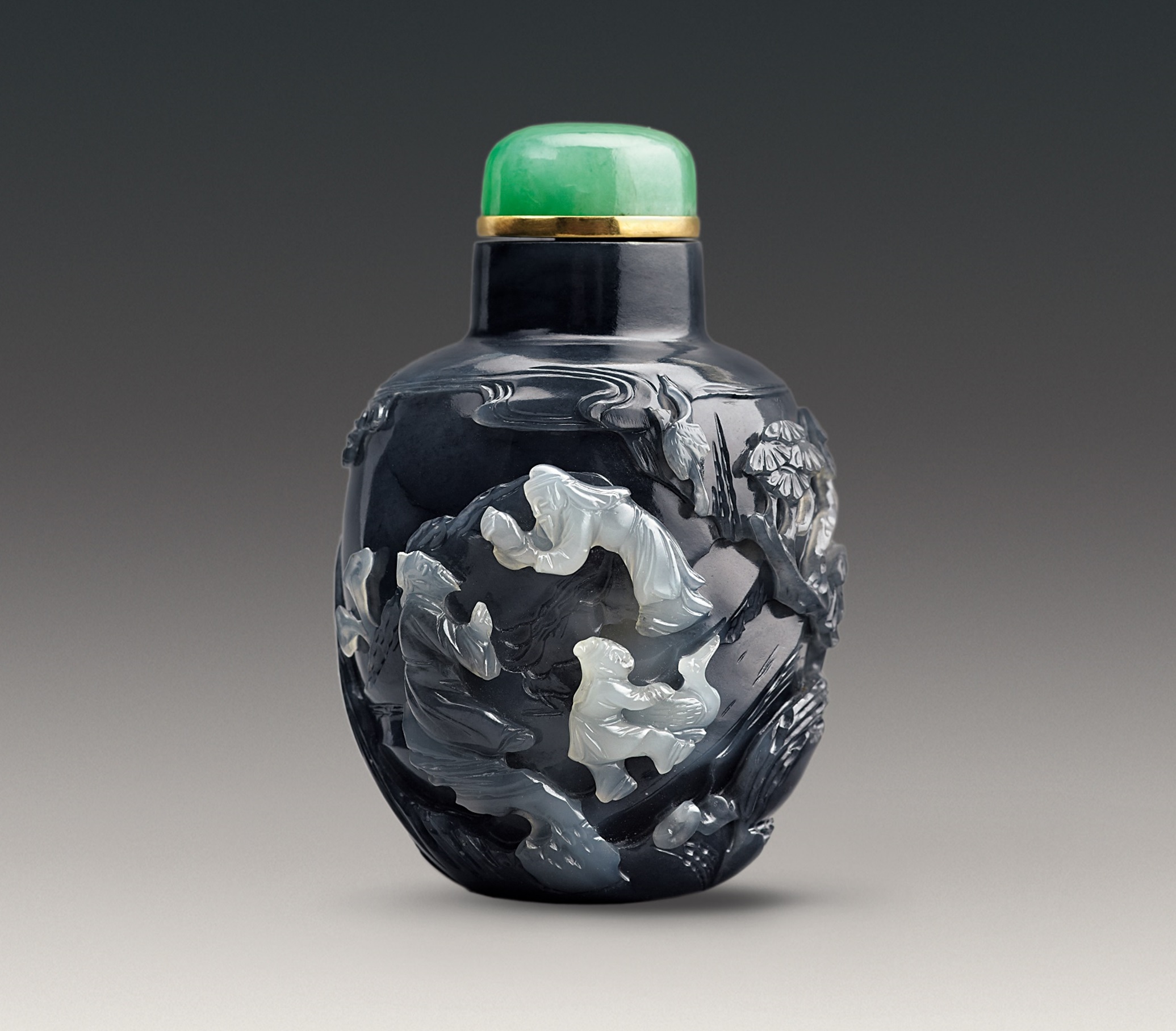
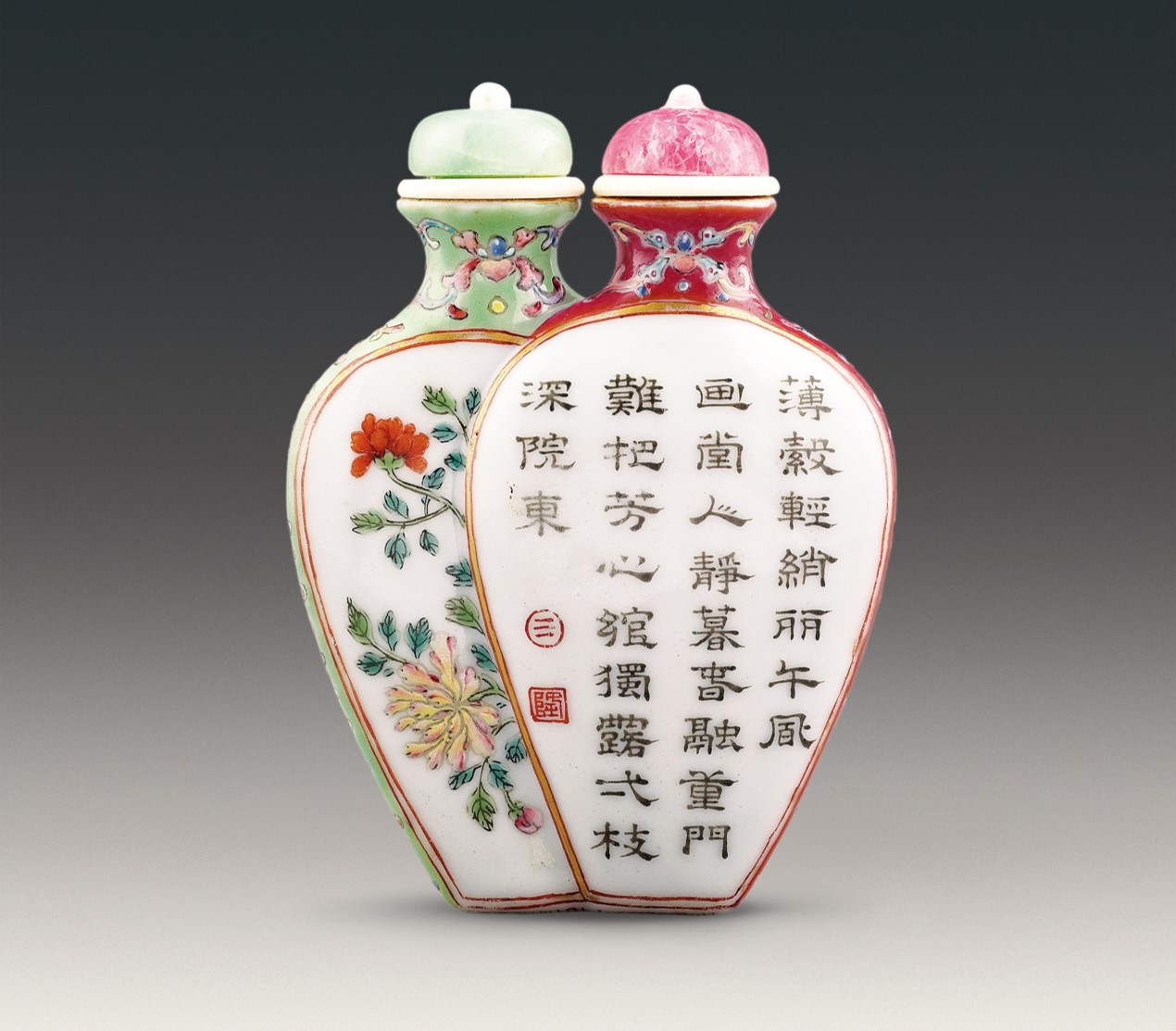
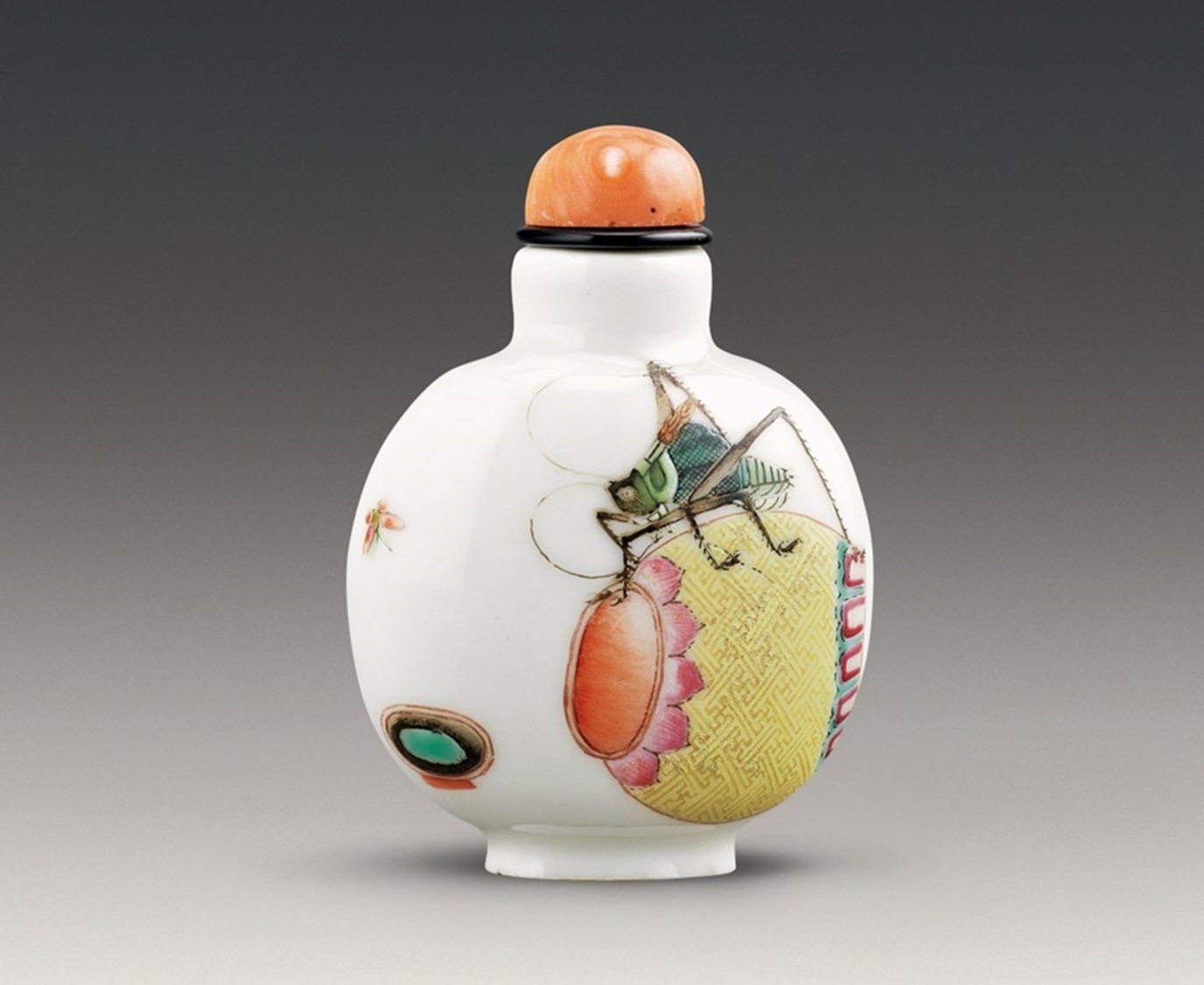

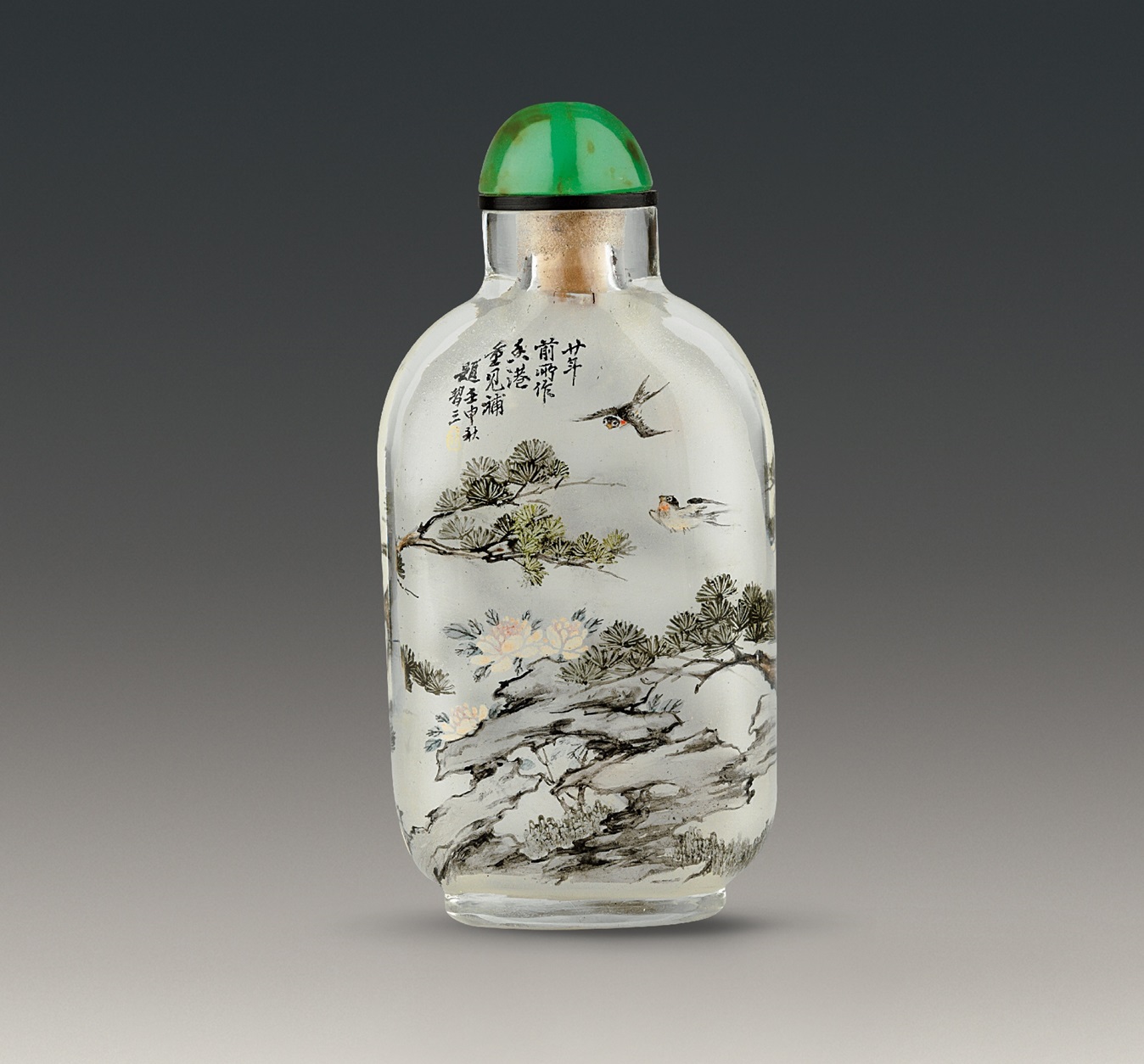
-
Double-gourd-shaped glass snuff bottle with floral design in painted enamels on yellow ground
-
Four-character mark of Qianlong and of the period (1736 - 1795), Qing Dynasty
-
Glass
-
H 6.1 cm Dia 2.6 cm
-
Fuyun Xuan Collection donated by Christopher and Josephine Sin
This is a double-gourd-shaped glass snuff bottle produced by the Qing imperial workshops, with flowers such as Chinese roses and begonia painted in enamels against a yellow ground. Due to the close melting points of the glass body and enamel pigments, it is difficult to achieve optimal colouration without deforming the glass body. Mr Sin had a great fondness for this piece and endeavoured to acquire it for his collection before his passing. Thus, this particular vessel holds special significance. -
-
Copper snuff bottle with western figures design in painted enamels
-
Four-character mark of Qianlong and of the period (1736 - 1795), Qing Dynasty
-
Metal (Copper)
-
H 5.5 cm L 4 cm W 2 cm
-
Fuyun Xuan Collection donated by Christopher and Josephine Sin
Decorated with vibrant and bright enamels, the body of this piece features two reserved panels encircled by scrolling leaf design, within which one side is painted with three goats, symbolising the auspicious connotation of “yang forces ushering in an auspicious start of the year” in Chinese tradition. On the other side, a pair of Western lovers is painted in chiaroscuro, reflecting Emperor Qianlong’s favour for Western figures. -
-
Gold snuff bottle with scene of mother and children in painted enamels
-
Four-character mark of Qianlong and of the period (1736 - 1795), Qing Dynasty
-
Metal (Gold)
-
H 5.5 cm L 4 cm W 2 cm
-
Fuyun Xuan Collection donated by Christopher and Josephine Sin
With gold as its body, this bottle is rare among painted enamel metal ware. It is an exemplary work of the integration of Western and Chinese styles, with the typical Chinese subject of a lady teaching her son portrayed in the relief panel using Western painting techniques. -
-
Snuff bottle with magpies and plums design in two-colour overlay on light rouge ground
-
Qing dynasty (1644 – 1911)
-
Glass
-
H 6.3 cm L 3.8 cm W 2 cm
-
Fuyun Xuan Collection donated by Christopher and Josephine Sin
This piece is crafted from a light rouge glass body created in the Qing imperial court and overlaid with dual-colour glass in dark rouge and green. It features a carving of magpies perching on plum blossoms, which serves as a metaphor for being “brimming with happiness up to one’s brows”. Overlay glass was an original creation of the Qing court, in which the glass body of one colour was overlaid with molten glass of another, and then the unnecessary parts were removed and cooled, leaving a motif in relief.
-
-
Double-gourd-shaped ivory snuff bottle carved with gourds design
-
Qing dynasty (1644 – 1911)
-
Ivory
-
H 8.8 cm L 1.2 cm W 3.8 cm
-
Fuyun Xuan Collection donated by Christopher and Josephine Sin
This bottle is carved from ivory in the form of a gourd. This miniature bottle is carved with nearly forty gourds and bats patterns, demonstrating exceptional craftmanship. Gourds are a common shape and motif for snuff bottles, which implies the wish for abundant offspring and fortune. -
-
Black jade snuff bottle with scholars and peach design
-
Qing dynasty (1644 – 1911)
-
Jade (Black jade)
-
H 7 cm L 4 cm W 4.5 cm
-
Fuyun Xuan Collection donated by Christopher and Josephine Sin
This bottle features a panoramic image crafted in layers through delicate relief carving, incorporating the natural colours and texture of the dark jade into its composition. The artisan’s unique craftsmanship is amply reflected in the vivid depiction of peaches, ducks, and paradise flycatchers with the jade’s lustrous white outer layer.
-
-
Coupled-vase-shaped snuff bottle with imperial poem inscription and floral design in fencai enamels
-
Four-character mark of Qianlong and of the period (1736 – 1795), Qing dynasty
-
Ceramics
-
H 8 cm L 6 cm W 2 cm
-
Fuyun Xuan Collection donated by Christopher and Josephine Sin
This bottle is in the form of a double vase from the imperial kiln of the Qing dynasty, decorated on each side with two sets of reserved panels. Within these panels, two poems, 'Peony' and 'Peach', composed by Emperor Qianlong, are inscribed in clerical script, accompanied by his seal in red enamels. The bottle is further adorned with a delicate floral design in fencai enamels that echoes the style of imperial ceramics with its combination of poetry, calligraphy, painting, and sealing. -
-
Snuff bottle with katydid design in fencai enamels
-
Four-character mark of Daoguang and of the period (1821 - 1850), Qing Dynasty
-
Ceramics
-
H 7 cm L 2 cm W 5.5 cm
-
Fuyun Xuan Collection donated by Christopher and Josephine Sin
A popular subject for snuff bottles in the Daoguang period, the katydid is painted here with delicate brushwork in rich, vibrant colours, giving it a lively appearance. The katydid’s cage is also adorned with fine geometric patterns in golden enamels, showcasing the typical style of the imperial kilns. -
-
Rock crystal snuff bottle inside-painted with portrait of Duan Fang
-
Ma Shaoxuan (1867 – 1939)
-
1907
-
Rock crystal
-
H 6.7 cm L 1.5 cm W 6.7 cm
-
Fuyun Xuan Collection donated by Christopher and Josephine Sin
This piece was painted with a portrait of Duan Fang, a prominent statesman in the late Qing dynasty, by Ma Shaoxuan, a master of the Beijing school of inside-painting. Ma used fine brushes to paint in reverse on the inner walls of this small bottle, rendering the image vividly with a technique reminiscent of photography, as though documenting the late Qing period in a microcosm.
-
-
Glass snuff bottle inside-painted with flowers and birds design
-
Wang Xisan (1938 – )
-
1968
-
Glass
-
H 7 cm L 1.5 cm W 4 cm
-
Fuyun Xuan Collection donated by Christopher and Josephine Sin
This bottle was made in 1968 by Wang Xisan, the founder of the Hebei school, who painted a paradise flycatcher perching on a pine tree branch on one side, and two swallows in flight on the other, showcasing the elegancy of a literatus. Wang met Mr Sin in Hong Kong in 1992 and came across this bottle again, so he added an inscription, a testament to the invaluable friendship between a collector and a master artisan. -
-
Rock crystal snuff bottle inside-painted with scenes of “Three Visits to the Thatched Cottage” and “Looking for plum blossom in the snow”
-
Ye Zhongsan (1869 – 1945)
-
1905
-
Rock crystal
-
H 7 cm L 2 cm W 5.5 cm
-
Fuyun Xuan Collection donated by Christopher and Josephine Sin
This bottle was painted by Ye Zhongsan, a master of the Beijing school of inside-painting, who was renowned for his novel-themed snuff bottles. On one side of the bottle, a scene from The Romance of the Three Kingdoms, “Three Visits to the Thatched Cottage”, is painted, while on the other side, he has painted an elder trekking through the snow in search of plum blossom, alluding to the noble character of literati who are indifferent to fame and material gain. -
-
Pig-shaped snuff bottle carved in round
-
Qing dynasty (1644 – 1911)
-
Jade (White jade)
-
H 4 cm L 3 cm W 6.5 cm
-
Fuyun Xuan Collection donated by Christopher and Josephine Sin
This piece is carved in the round from white jade into the form of a pig, with details outlined in fine incision, making it a very realistic work of art with a tint of naiveté. Pig is a common form found in animal-shaped bottles, and in Chinese culture, it carries a variety of meanings, often symbolising abundance and wealth. -
Double-gourd-shaped glass snuff bottle with floral design in painted enamels on yellow groundCopper snuff bottle with western figures design in painted enamelsGold snuff bottle with scene of mother and children in painted enamelsSnuff bottle with magpies and plums design in two-colour overlay on light rouge groundDouble-gourd-shaped ivory snuff bottle carved with gourds designBlack jade snuff bottle with scholars and peach designCoupled-vase-shaped snuff bottle with imperial poem inscription and floral design in fencai enamels Snuff bottle with katydid design in fencai enamelsRock crystal snuff bottle inside-painted with portrait of Duan FangGlass snuff bottle inside-painted with flowers and birds design Rock crystal snuff bottle inside-painted with scenes of “Three Visits to the Thatched Cottage” and “Looking for plum blossom in the snow”Pig-shaped snuff bottle carved in round
